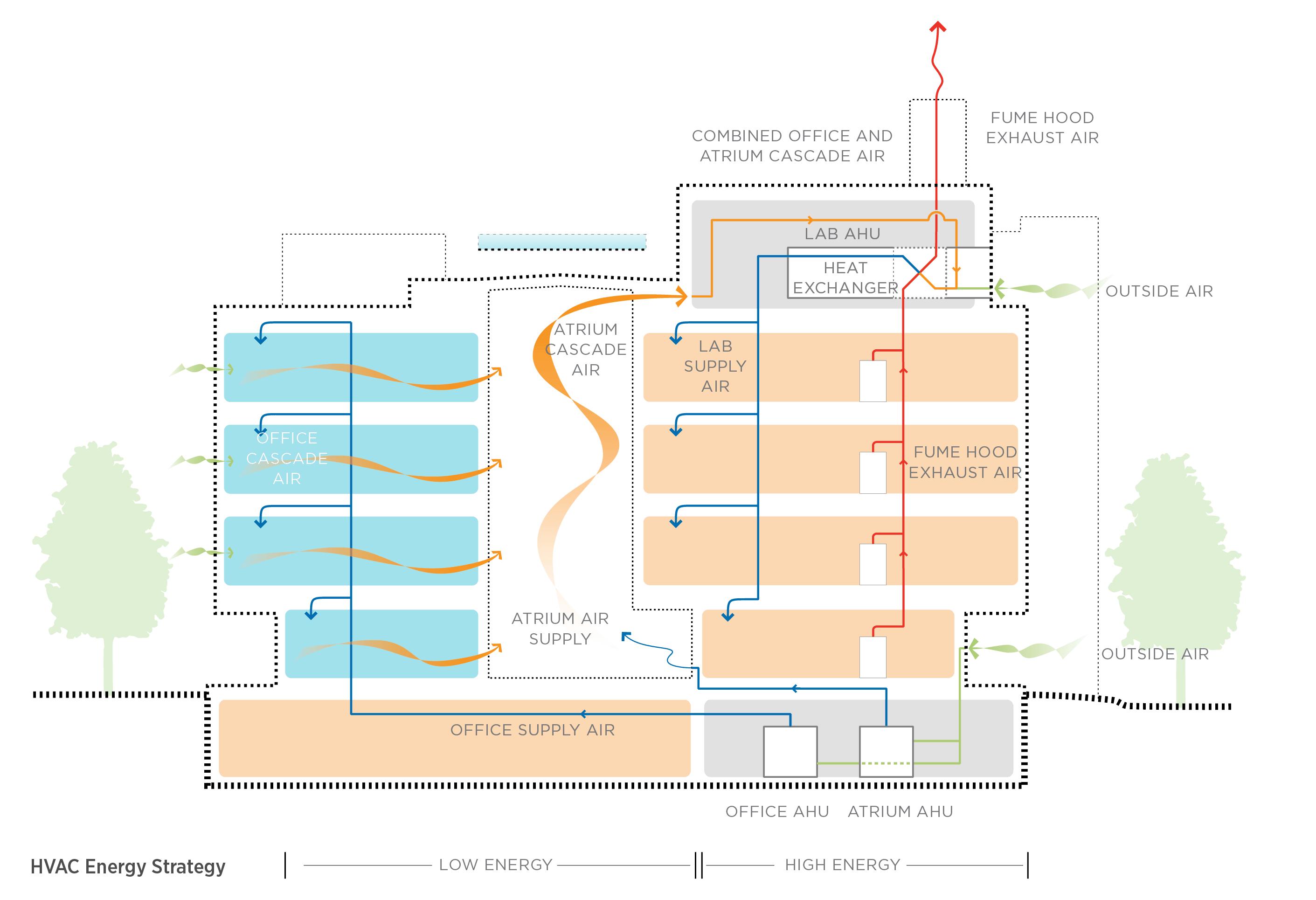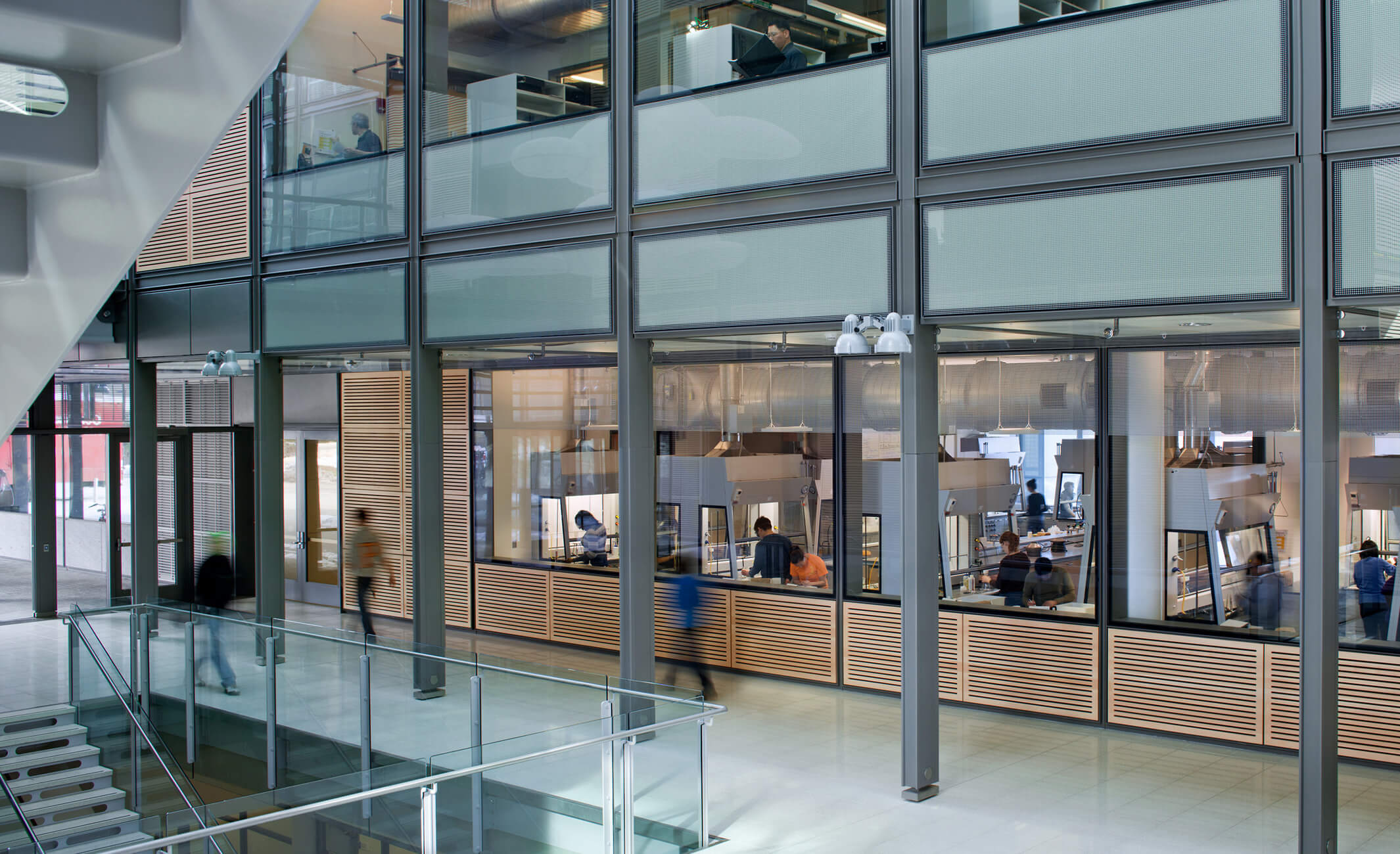In 2008, Princeton published a Sustainability Plan highlighting three primary goals: reducing greenhouse gas emissions, resource conservation, and research, education and civic engagement. The Frick Chemistry Laboratory is the first project to which Princeton has applied its aspirational new sustainability guidance, making sustainability a key element of the project.
 Mitigating the high energy demands for chemistry laboratories led the design efforts. Overall, lifecycle cost assessments were performed for six components of the building, covering energy (solar thermal heating, photovoltaics, atrium ventilation schemes, and fume hood types), water (rainwater collection and reuse) and façades (laboratory perimeter heating). The analyses considered the initial cost of implementing these technologies as well as the lifecycle costs over 50 years. The project achieved a 24% site energy cost reduction over ASHRAE 90.1, 2007.
Mitigating the high energy demands for chemistry laboratories led the design efforts. Overall, lifecycle cost assessments were performed for six components of the building, covering energy (solar thermal heating, photovoltaics, atrium ventilation schemes, and fume hood types), water (rainwater collection and reuse) and façades (laboratory perimeter heating). The analyses considered the initial cost of implementing these technologies as well as the lifecycle costs over 50 years. The project achieved a 24% site energy cost reduction over ASHRAE 90.1, 2007.

To help disseminate information to both occupants and visitors, a building dashboard is installed in the Taylor Commons displaying its sustainable and energy-saving features. Using a series of calculation algorithms based on measured data from the building management system (BMS), energy and other resource usage is tracked throughout the facility and displayed as a comparison to a conventionally designed and operated building. With it, the University intends to link all major new buildings to a campus-wide network to allow visitors to monitor and track the information across the campus.

